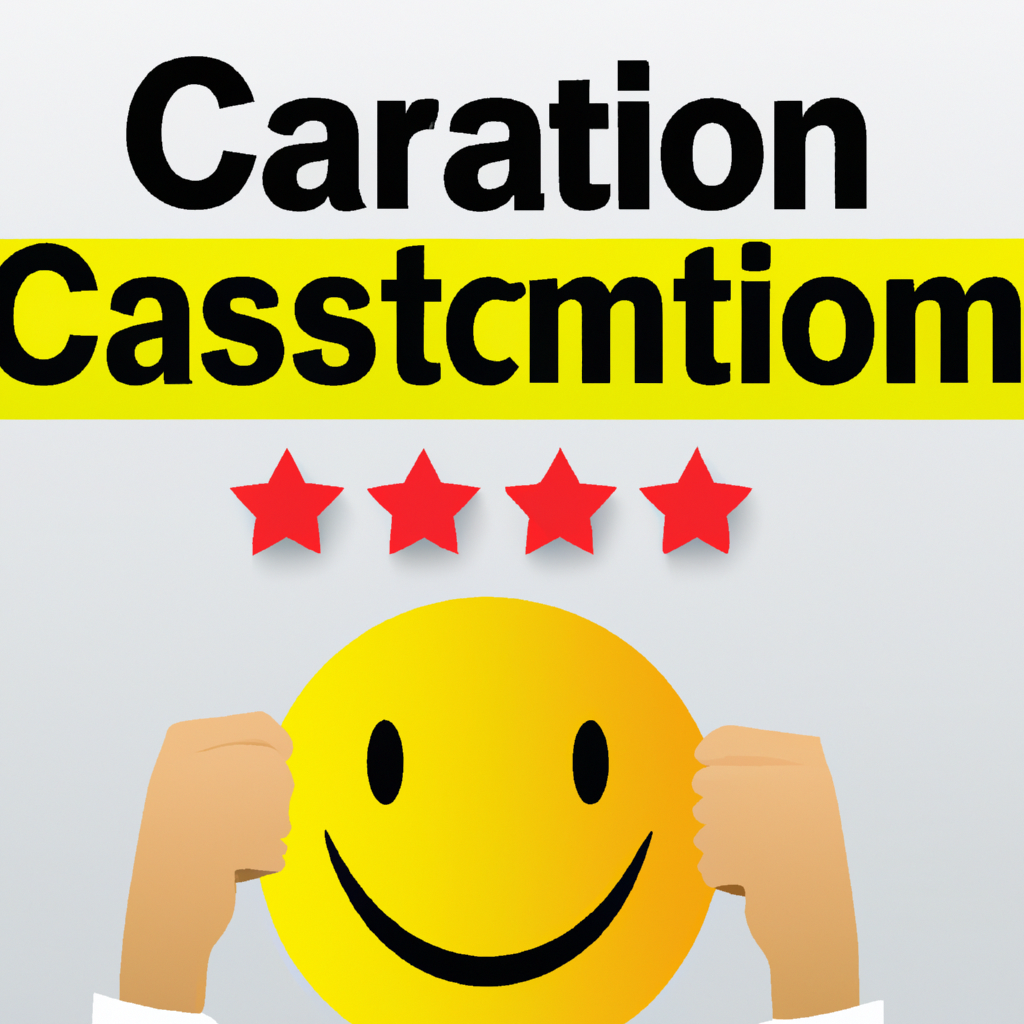Customer Satisfaction Ratings: A Key Metric for Business Success
Introduction
Customer satisfaction ratings are crucial for businesses in today’s competitive market. They provide valuable insights into the overall experience customers have with a company’s products or services. By measuring and analyzing these ratings, businesses can identify areas of improvement, enhance customer loyalty, and ultimately drive growth. In this article, we will explore the significance of customer satisfaction ratings and discuss how businesses can leverage them to achieve success.
Why are Customer Satisfaction Ratings Important?
Customer satisfaction ratings serve as a reflection of how well a business is meeting its customers’ needs and expectations. Here are a few reasons why these ratings are essential:
1. Measure of Customer Loyalty: Satisfied customers are more likely to become loyal advocates for a brand. By consistently monitoring satisfaction ratings, businesses can identify loyal customers and nurture those relationships, leading to increased customer retention and positive word-of-mouth.
2. Indicator of Product/Service Quality: Customer satisfaction ratings provide valuable feedback on the quality of a company’s offerings. Consistently low ratings may indicate underlying issues that need to be addressed, such as product defects, poor customer service, or ineffective communication.
3. Competitive Advantage: In today’s customer-centric market, businesses that prioritize customer satisfaction gain a competitive edge. High satisfaction ratings can differentiate a company from its competitors and attract new customers who value exceptional service.
How to Measure Customer Satisfaction Ratings
Measuring customer satisfaction requires a systematic approach. Here are a few popular methods businesses use to collect and analyze customer satisfaction ratings:
1. Surveys: Conducting surveys is a common way to gather customer feedback. Whether through online questionnaires, phone interviews, or in-person interactions, businesses can ask specific questions to gauge satisfaction levels. Rating scales, such as the Net Promoter Score (NPS), allow customers to rate their experiences on a numerical scale.
2. Social Media Monitoring: Monitoring social media platforms enables businesses to track customer sentiment and identify potential issues or areas of improvement. Analyzing comments, reviews, and mentions can provide real-time insights into customer satisfaction levels.
3. Customer Feedback Forms: Implementing feedback forms on websites, in-store, or after a purchase allows customers to provide feedback directly. These forms can include open-ended questions, multiple-choice options, or rating scales, providing businesses with valuable data for analysis.
Analyzing and Utilizing Customer Satisfaction Ratings
Collecting customer satisfaction ratings is only the first step; analyzing and utilizing the data is equally important. Here are some key steps to consider:
1. Identify Trends and Patterns: Analyze the data to identify recurring trends or patterns in customer satisfaction ratings. Look for common themes, such as specific product features that customers appreciate or areas where improvements are needed.
2. Address Negative Feedback: Pay close attention to low satisfaction ratings and negative feedback. Take prompt action to address customer concerns, resolve issues, and improve the overall customer experience. Engage with dissatisfied customers to show that their feedback is valued and taken seriously.
3. Celebrate Positive Feedback: Acknowledge and celebrate positive customer feedback. Share success stories internally to motivate employees and externally to showcase the company’s commitment to customer satisfaction. Positive feedback can also be used for testimonials or case studies to attract new customers.
4. Continuous Improvement: Use customer satisfaction ratings as a benchmark for continuous improvement. Regularly review and update processes, products, and services based on customer feedback. Implementing changes based on customer insights demonstrates a commitment to meeting customer expectations.
Conclusion
Customer satisfaction ratings are a vital metric for businesses seeking long-term success. By measuring, analyzing, and utilizing these ratings effectively, companies can enhance customer loyalty, improve product/service quality, and gain a competitive advantage. Prioritizing customer satisfaction ultimately leads to increased customer retention, positive brand reputation, and sustained business growth.

